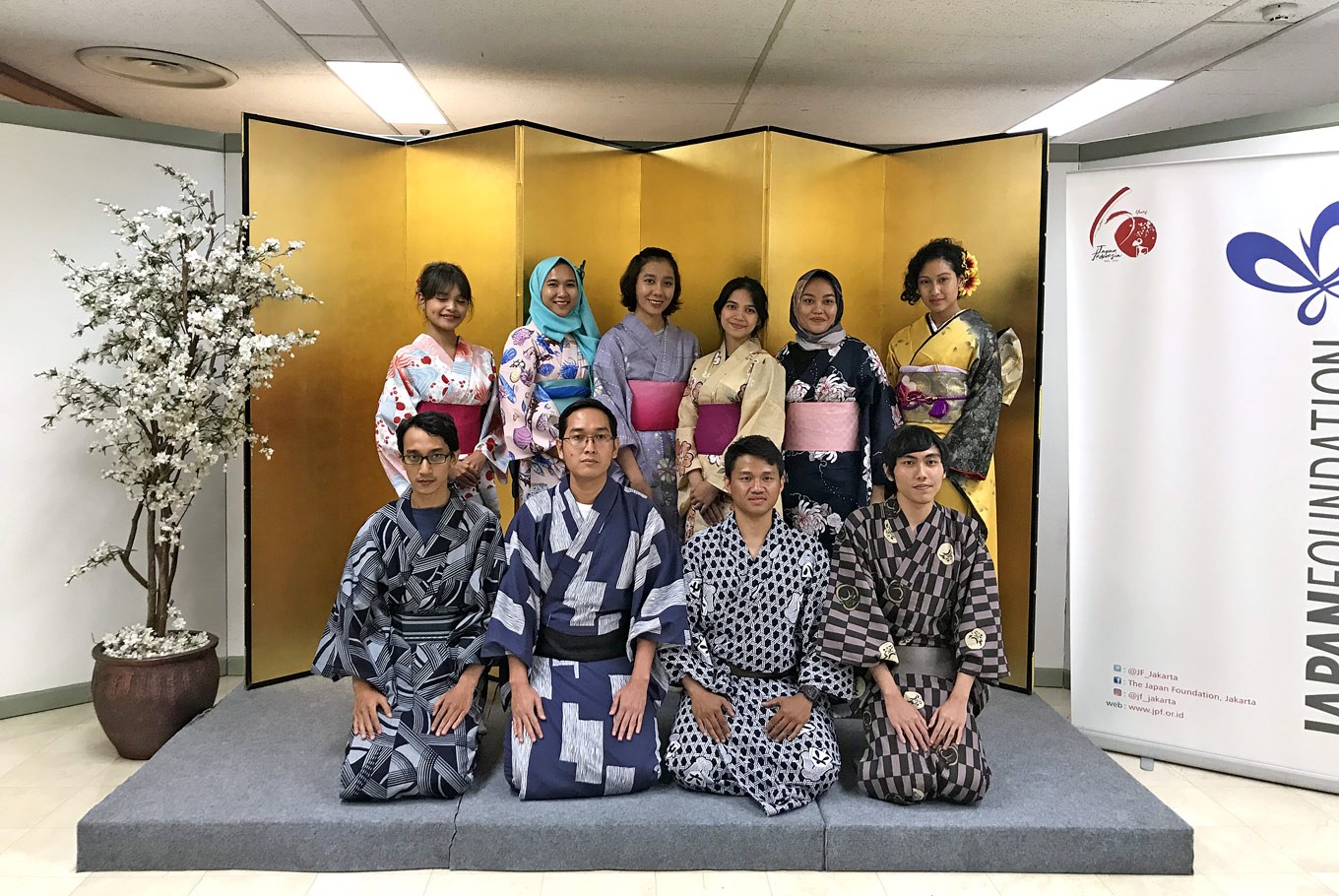Popular Reads
Top Results
Can't find what you're looking for?
View all search resultsPopular Reads
Top Results
Can't find what you're looking for?
View all search resultsStudying kimono with the masters
While tourists generally are happy with just wearing the kimono, attending a matou (kimono demonstration) will elevate the experience.
Change text size
Gift Premium Articles
to Anyone
W
earing the traditional kimono seems to be a must-do experience when it comes to getting immersed in Japanese culture. While tourists generally are happy with just wearing the kimono, attending a matou (kimono demonstration) will elevate the experience.
A recent matou featured two experienced kimono sensei, Yuko Nakano and Miyuki Ishii, both hailing from Japan to ensure the authenticity of the experience. Held by the Japan Foundation over the weekend, the free matouattracted around 100 enthusiastic attendees.
Historically, the word “kimono” comes from the Japanese words ki (wearing) and mono (things). Thus kimono simply means the clothes that people wear. The two kimono senseis introduced the furisode (a long-sleeved kimono worn by unmarried women), montsuki hakama (man’s kimono), hanayome(Japanese bride’s kimono) and the casual yukata kimono.
The first sensei, Nakano, has been a fan of Japanese weaving since she was little. The lecturer at Kyoto Kimono Gakuin is also interested in the art of embroidering.
Meanwhile, sensei Ishii, also a lecturer at Kyoto Kimono Gakuin, has studied the kimono since she was 20 years old. She is also a kimono designer who aspires to introduce and make the kimono more popular among all ages.
There is a specific technique to cutting the fabric in the shoulder of the kimono. The width of the shoulder should be 135 centimeters, while the length of the kimono should be 13 meters. There is a particular reason for having such specific rules in kimono making, to avoid unnecessary cutting and to teach designers and wearers to appreciate the fabric.
“The rest of the cloth from the first kimono can be used to make another kimono if it has enough length and width,” Nakano said.
Kimono designers also make sure that no fabric goes to waste. The excess fabric can be used to make clothes for dolls or baby clothes.
Nakano said the kind of thread that is used to make a kimono is called yukitsugi, which is very strong. A kimono fabric will be measured to the body of the customer and designed according to their requests. The motifs, colors and thickness of the fabric is also made to adjust the seasons of Japan.
“The customer can also order specific patterns for their kimonos,” Nakano said, adding that some orders include motifs from popular high-end international brands.
Kimono designers make motifs based on the beauty of animals, plants, seasons in Japan, the weather or any other thing that captures their interest. The patterns are the truest and deepest kind of love that the designer shows for his customers, so wearing the kimono properly is a form of respect for the designer.
“Make sure to fold the kimono on your chest from left to right and don’t forget to also make sure that the back of the kimono is parallel with the line of your backbone” Nakano said.
Introducing the kimono to the world through matou sessions is a part of the cultural diplomacy of Japan. Nakano said that in order to extend the kimono to the world, designers will take inspirations from the local culture of other countries.
“They will make patterns and designs that describe the sunny climate that the Indonesian people always enjoy, natural conditions in Indonesia, the weather, plants, animals and any other thing that describes Indonesia,” she said.
Kimono designers will also try to adjust the materials to the humidity of Indonesia.
Nowadays in Japan, the kimono is synonymous with formal occasions.
“They will only wear kimonos if they are going to attend a really formal event such as a graduation, wedding, tea ceremony or other formal occasion,” Nakano said.
The design of the kimono itself has already evolved over this past few years because of the influence of pop culture. The length of the kimono’s arm has also become shorter now to make it feel more comfortable for the wearer.
An important element of Japanese culture, the matou concluded with a message that wearing the kimono properly is a way to appreciate Japanese culture.
***
The writer is an intern at The Jakarta Post












